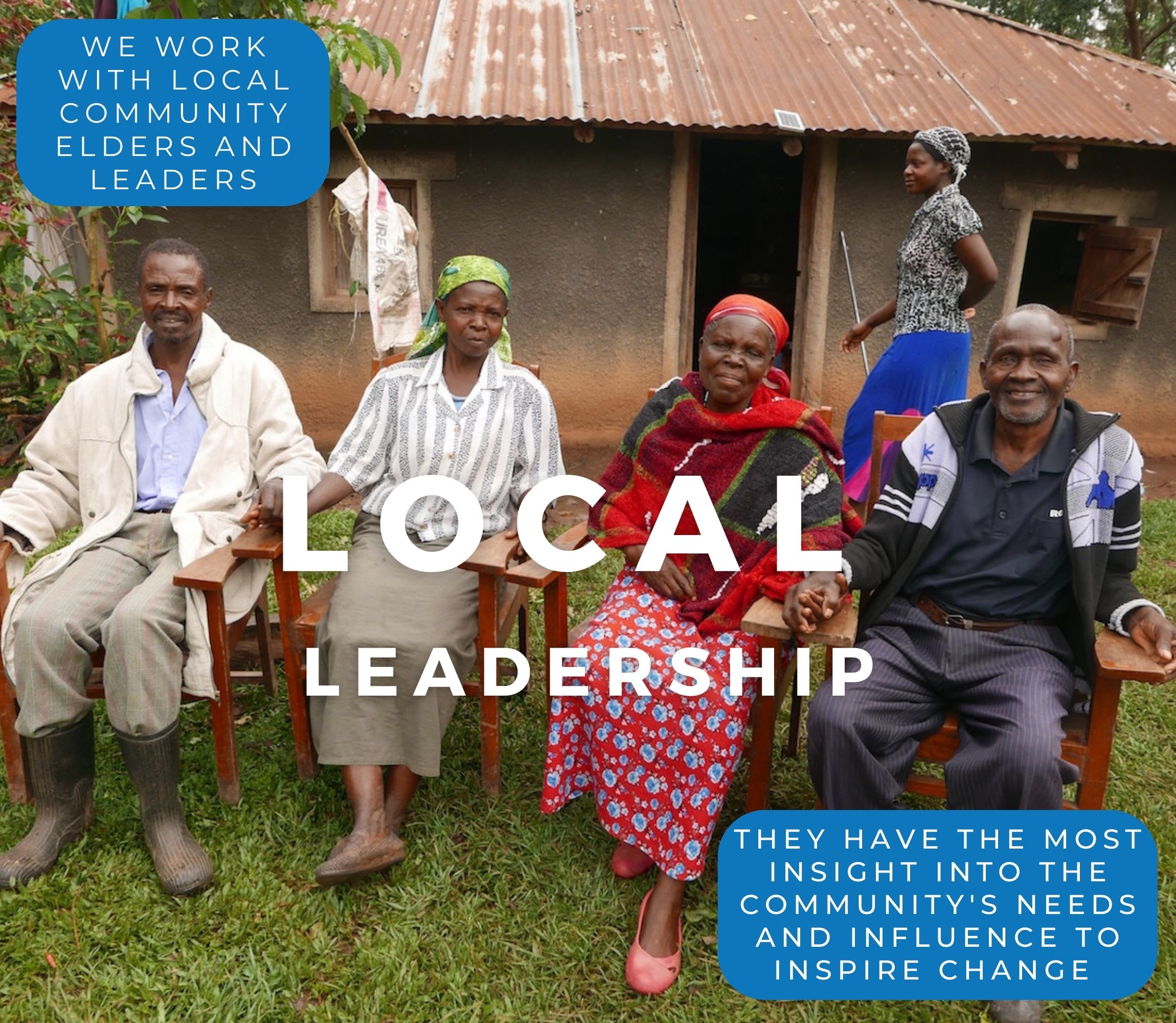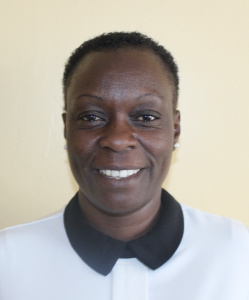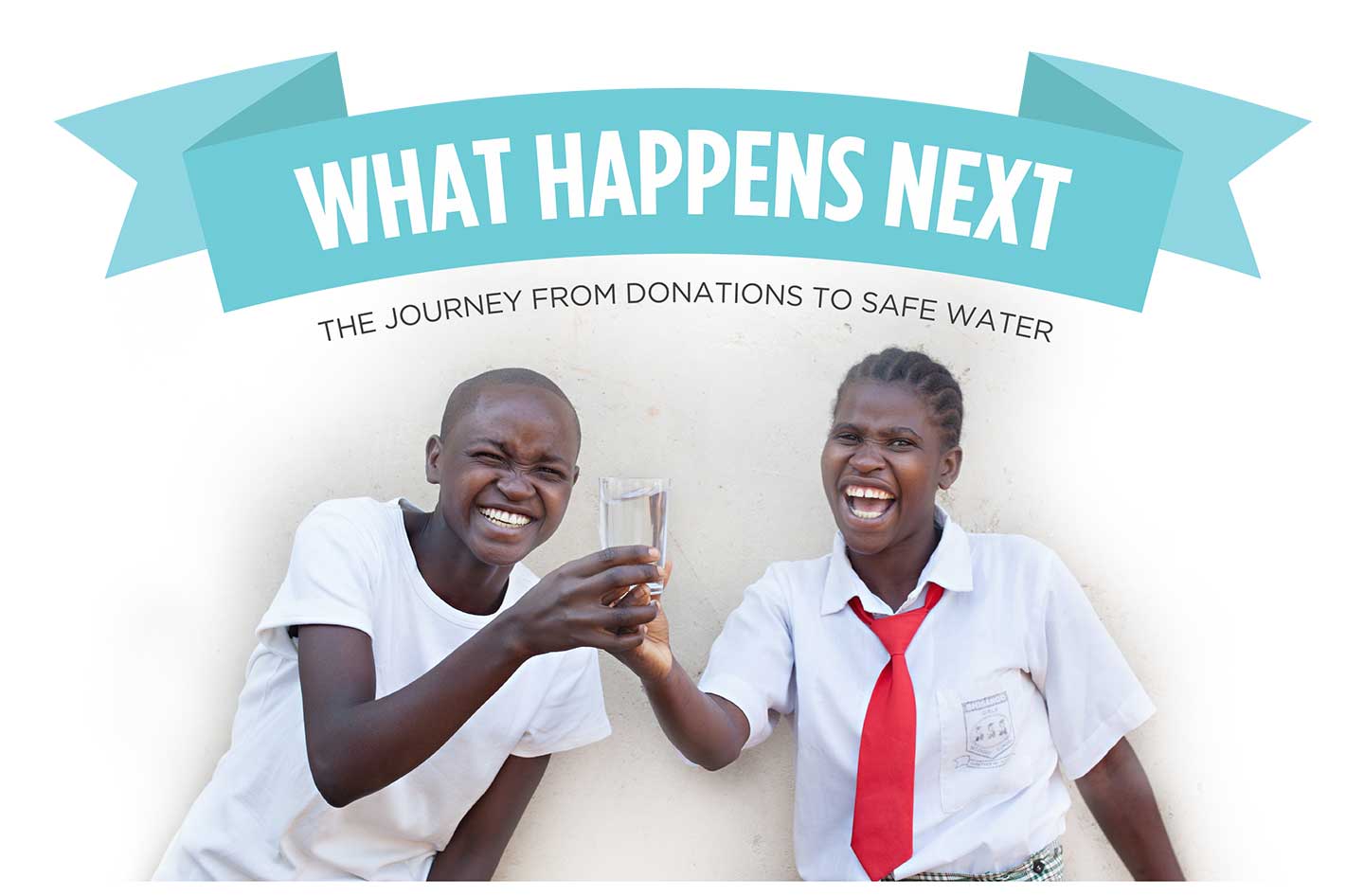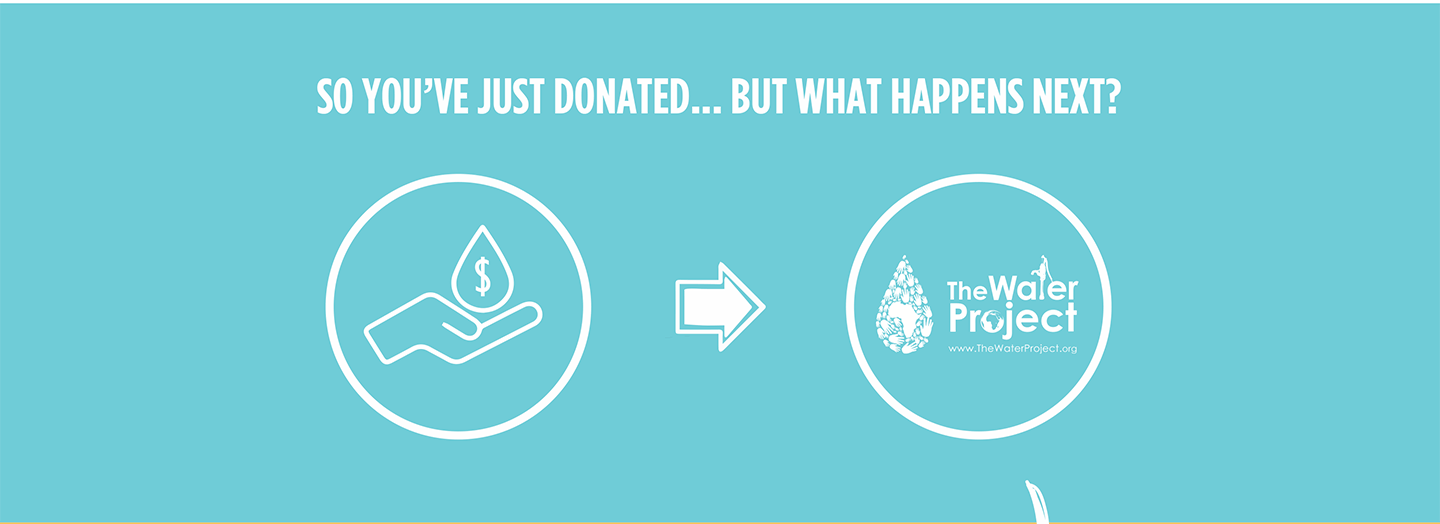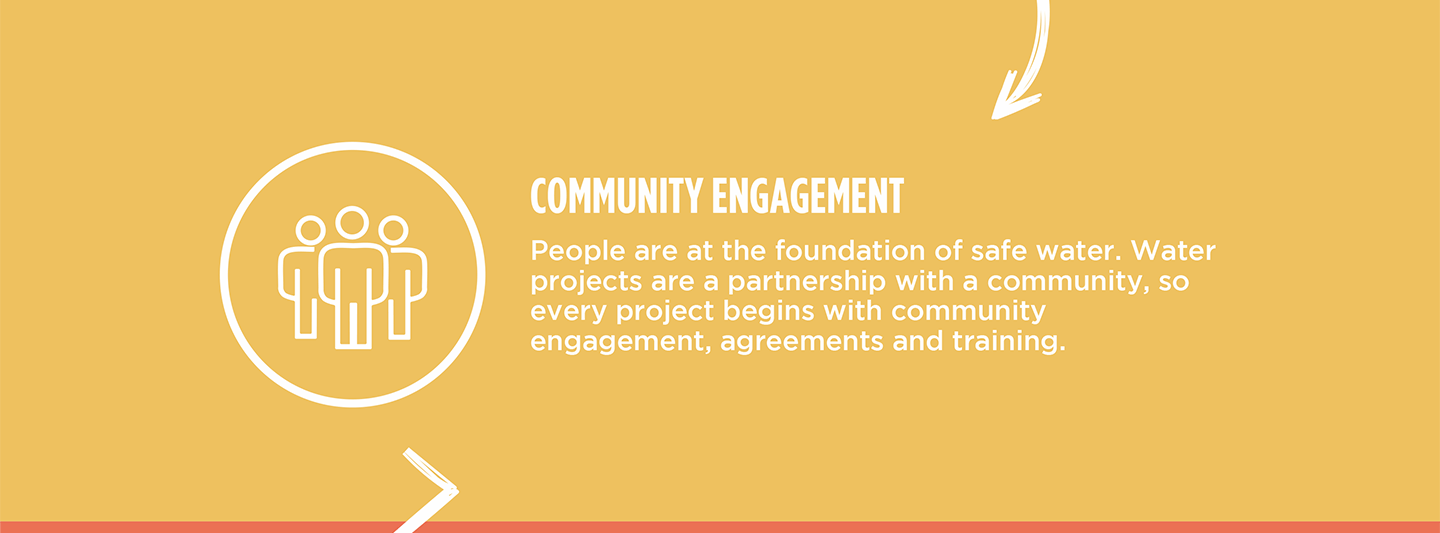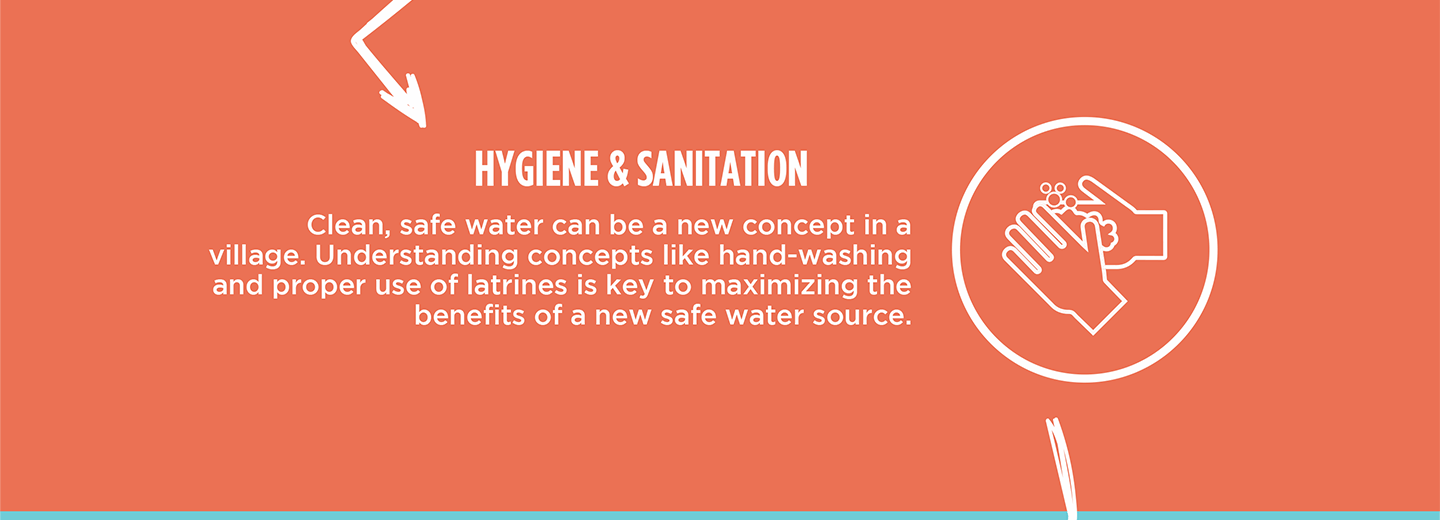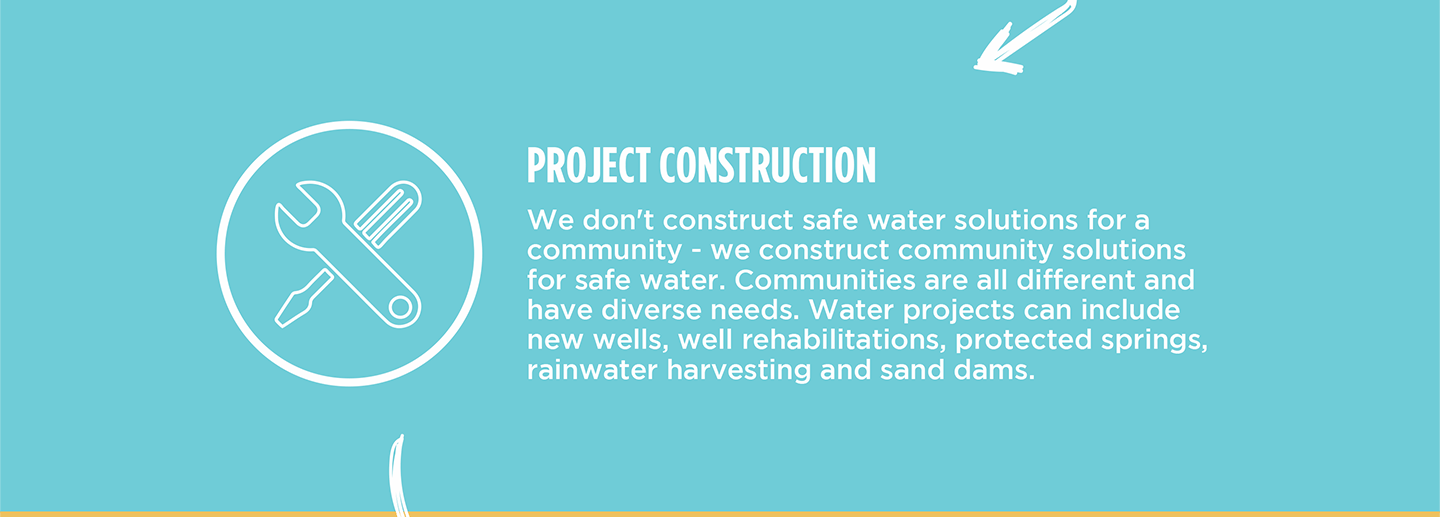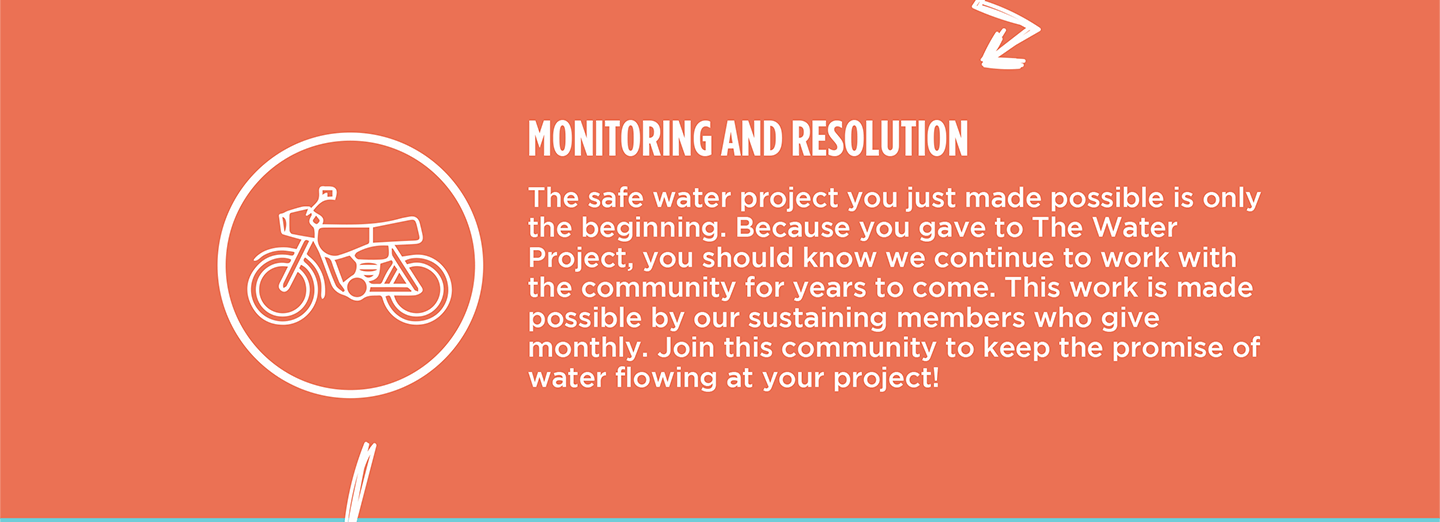March, 2022: Kharinda Spring Protection Complete!
Manguliro now has access to clean water! We transformed Kharinda Spring into a flowing source of water, thanks to your donation. Our team protected the spring and trained the community on improved sanitation and hygiene practices, including COVID-19 prevention.

Female farmer Philister Muyale, 39 said, "I will now take safe and clean water, which is reliable. The water will reduce cases of typhoid and diarrhea. I will use the water to water my vegetables during the dry season. I will not lack fresh vegetables. Lastly, it is easier and [more] convenient to fetch water from the protected spring."
Children were just as excited as the adults about the new water point.

Sydney, age 11.
"The protected spring will save my time after school because there will be no more queuing at the protected spring in order to draw water. I will use water to bathe and clean my uniforms. In addition, I will have enough time to do homework, hence improve my academic performance," said Sydney N.
Preparing for Spring Protection
Community members worked together to source and carry all locally available construction materials to the spring. These included bricks, sand, stones, and fencing poles. Some people also chiseled away at large rocks to break them down into gravel. Because people have to carry most items by hand, the materials collection process can take anywhere from a few weeks to months.

Clearing the construction site.
When the community members had prepared everything, we sent a lorry to the community to deliver the rest of the construction materials, including the cement, plastic tarps, and hardware. Then, our artisan and field officers deployed to the spring to begin work. Individual households provided meals throughout each day to sustain the work team.
From Open Source to Protected Spring: A Step-by-Step Process
At last, it was time to dig in at the spring! Locals lent their strength to the artisans each day to help with the manual labor. First, we cleared and excavated the spring area. Next, we dug a drainage channel below the spring and several surface runoff diversion channels above and around the spring. These help to divert environmental contaminants carried by the rains away from the spring.

Preparing the foundation.
To ensure community members could still fetch water throughout the construction process, we also dug temporary diversion channels from the spring's eye around the construction site. This allowed water to flow without severely disrupting community members' water needs or the construction work.
Excavation created space for setting the spring's foundation, which is made of thick plastic tarp, wire mesh, concrete, and waterproof cement. After setting the base, we started brickwork to build the headwall, wing walls, and stairs.

Next, we began one of the most crucial spring protection steps to ensure a fully functional water point: setting the discharge pipe. The discharge pipe has to be low enough in the headwall so that the water level inside never rises above the spring's eye, yet high enough to leave eighteen to twenty inches between the pipe and the spring floor. This allows room for the average jerrycan (a 20-liter container) to sit beneath the pipe without making contact.
If we place the discharge pipe too high above the spring's eye, too much backpressure could force the flow to emerge elsewhere. Too low, and community members would not be able to access the water easily. We embedded the pipe using clay (or mortar when clay is in short supply) and placed it at an incline to ensure water flows in the right direction.

In coordination with brickwork, we pitched medium to large stones on both sides of the spring's drainage channel. We then cemented and plastered each stone group into place, forming the rub walls. This helps discourage people and animals from standing in that area, which could cause soil erosion and thus a clogged drainage area.
We then turned to cementing and plastering both sides of the headwall and wing walls. These finishing layers reinforce the brickwork and prevent water in the reservoir from seeping through the walls. In turn, enough pressure builds in the reservoir box to push water out through the discharge pipe.

As the headwall and wing walls were curing, we cemented and plastered the stairs and installed four tiles beneath the discharge pipe. The tiles protect the concrete from the falling water's erosive force while beautifying the spring and facilitating easy cleaning of the spring floor.
We transitioned to the final stages of construction with the tiles in place - backfilling the reservoir box. First, we cleared the collection box of any debris that may have fallen in since its construction, such as dead leaves or other items. Then we redirected the temporary diversion channels back into the reservoir box, channeling water into this area for the first time. We closed off all of the other exits to start forcing the water through the discharge pipe only.

Backfilling.
With much help from the community, we filled up the reservoir area with the clean and large stones they gathered, arranging them in layers like a well-fitting puzzle. We covered the rocks with a thick plastic tarp to minimize potential contamination sources from aboveground, followed by a layer of soil. We piled enough dirt on top to create a slight mound to compensate for the backfill's future settlement.
Community members transplanted grass onto the backfilled soil to help prevent erosion. Finally, the collection area was fenced to discourage any person or animal from walking on it since compaction can lead to disturbances in the backfill layers and potentially compromise water quality.

The entire construction process took about two weeks of work and patience to allow the cement and plaster to finish curing. As soon as it was ready, people got the okay from our field officers to fetch water. We officially handed over the spring to mark the community's ownership of the water point. The women danced and sang songs to celebrate the community's safe access to clean water and thank God. Happiness, thanksgiving, and appreciation were the order of the day, flowing in all directions.
Training on Health, Hygiene, COVID-19, and More
Due to the ongoing challenges and restrictions amidst the pandemic, we worked with local leaders and the national Ministry of Health to gain approval for a small group training about health, hygiene, and COVID-19 prevention.
Together with the community, we found their preferred date for training while considering other community calendar events, such as the agricultural season and social events. We requested a representative group of community members to attend training to relay the information learned to the rest of their family and friends.
When the day arrived, facilitators Mary Afandi and Rose Amulavu deployed to the site to lead the event. 11 people attended the training, including village health trainers. We held the training under trees on the homestead of Patrick Kalenda, the spring's namesake.

Opening the training time with a prayer.
Attendance was not as expected with fewer participants because of a community funeral and the community's men needing to work on their farms.
Perhaps the most crucial topic of the day was our session on COVID-19 prevention and control. Due to the rampant spread of misinformation about COVID-19, we dedicated time to a question and answer session to help debunk rumors about the virus and provide extra information where needed.

We covered several other topics, including community participation in the project; leadership and governance; personal and environmental hygiene; water handling and treatment; operation and maintenance of the spring; dental hygiene; the ten steps of handwashing; and how to make and use a tippy tap and leaky tin. In addition, we held an election for the newly formed water user committee leaders during the leadership and governance session.
We also brainstormed income-generating activities that community members can use to start a group savings account for any future minor repairs to the spring and a cooperative lending group to enable members to develop small businesses.

Participants were very eager to learn how to make soap. Agnes Kharinda, one of the participants, confessed she had been buying liquid soap from the marketplace whose quality was not as good as the one they had been taught to make during the training. She decided to sell soap so she can generate additional income.

Rose practicing how to wash her hands properly.
Water committee chairperson and village health volunteer, 50-year-old Rose Lumbasi said, "The training was very valuable because I learned how to make quality soap and the reagents used and their names. I will no longer buy liquid soap from anybody, or [the] marketplace, because I now know how to make it by myself. I will avail myself to teach those who did not attend the training, so that they can be able to make [it too], instead of buying it. Soap-making will earn me some income. I will also share the knowledge gained with other members of the community."
When an issue arises concerning the spring, the water user committee is equipped with the necessary skills to rectify the problem and ensure the water point works appropriately. However, if the issue is beyond their capabilities, they can contact our field officers to assist them. Also, we will continue to offer them unmatchable support as a part of our ongoing monitoring and maintenance program.
Thank you for making all of this possible!


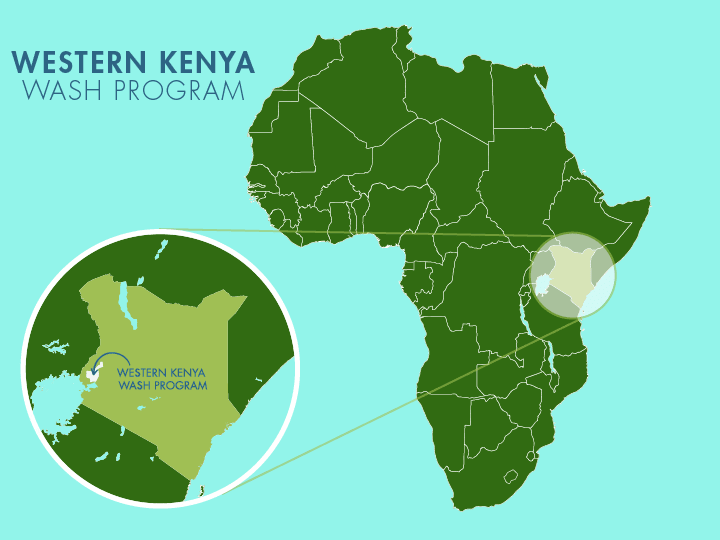
 Protected Spring
Protected Spring
 Rehabilitation Project
Rehabilitation Project

